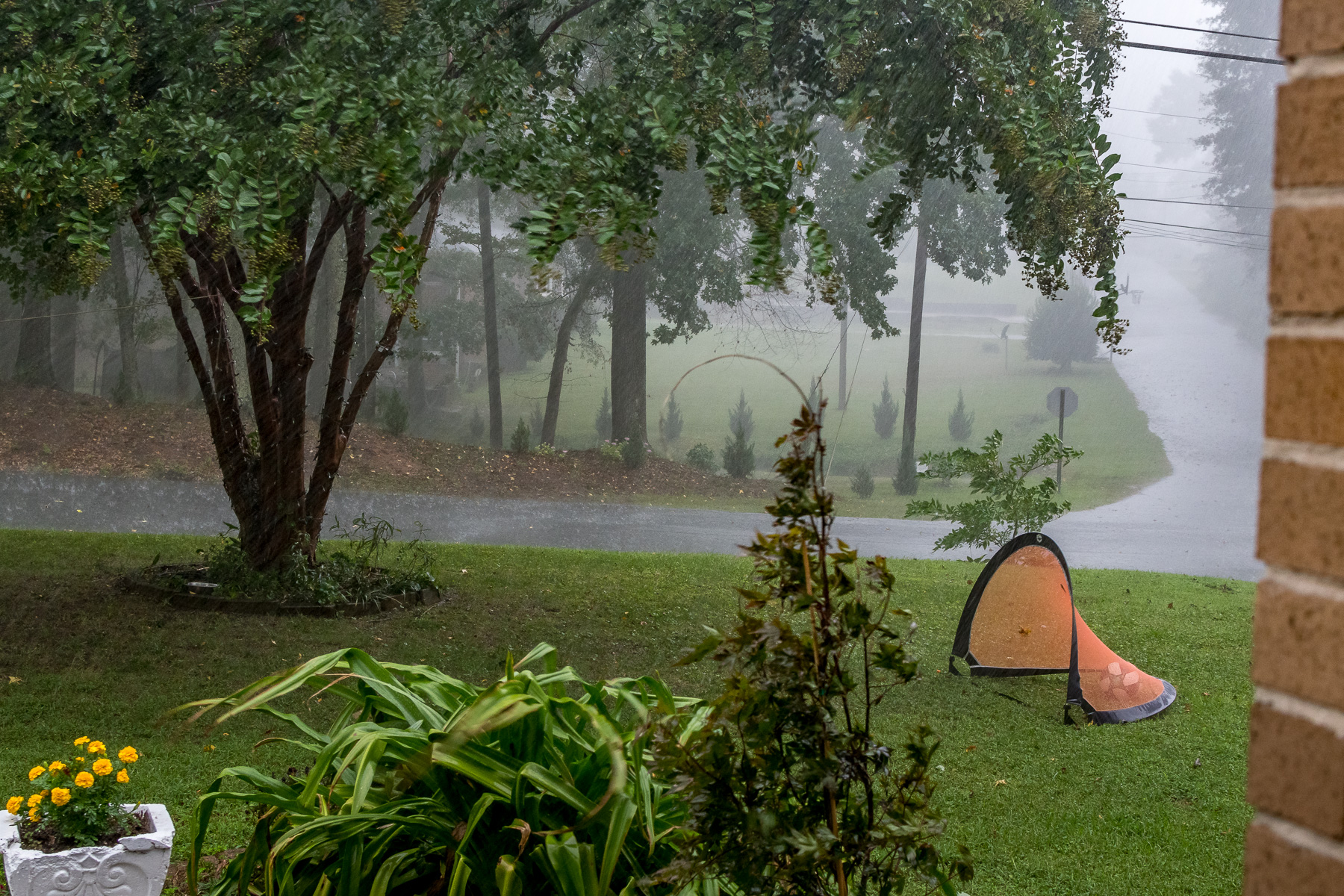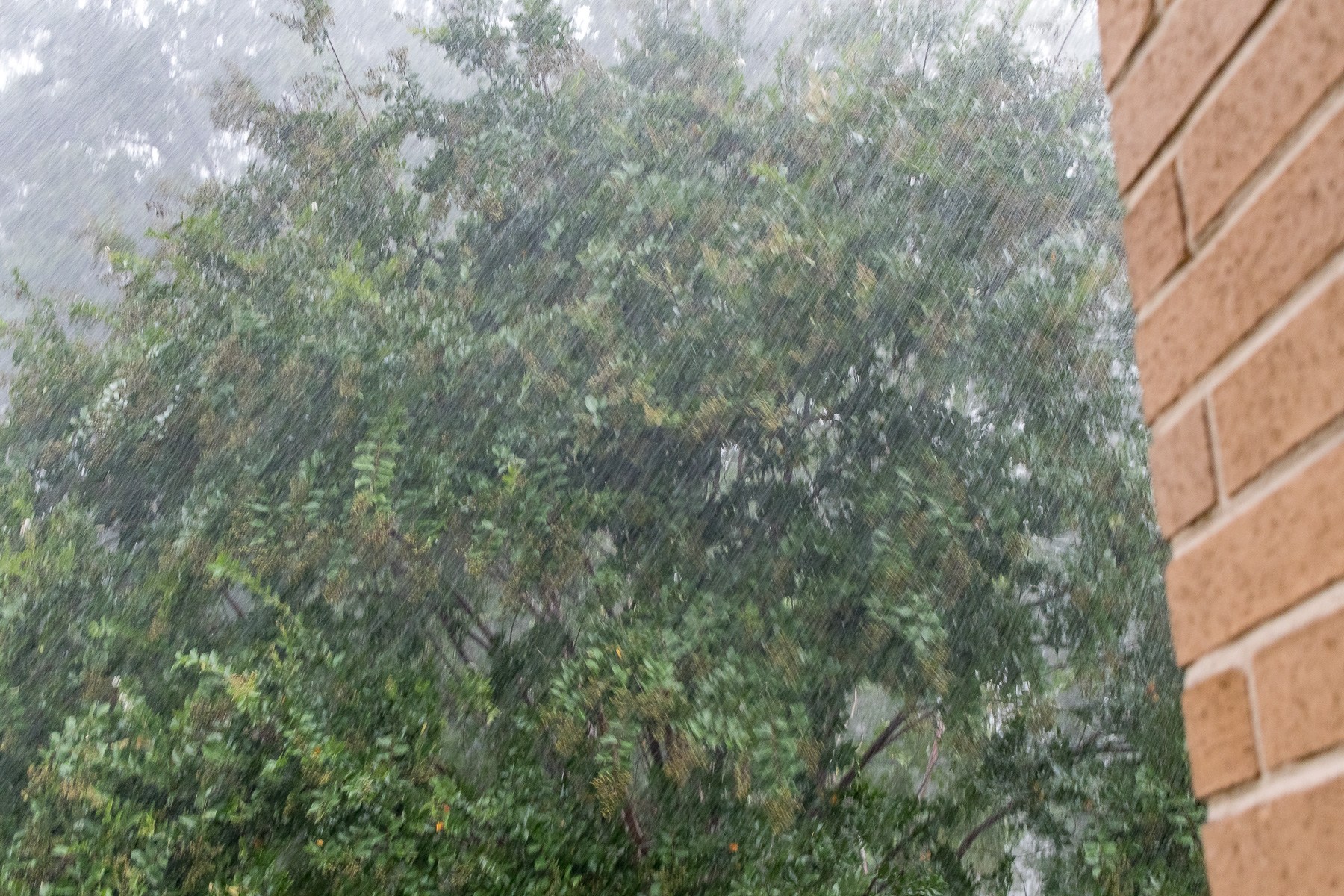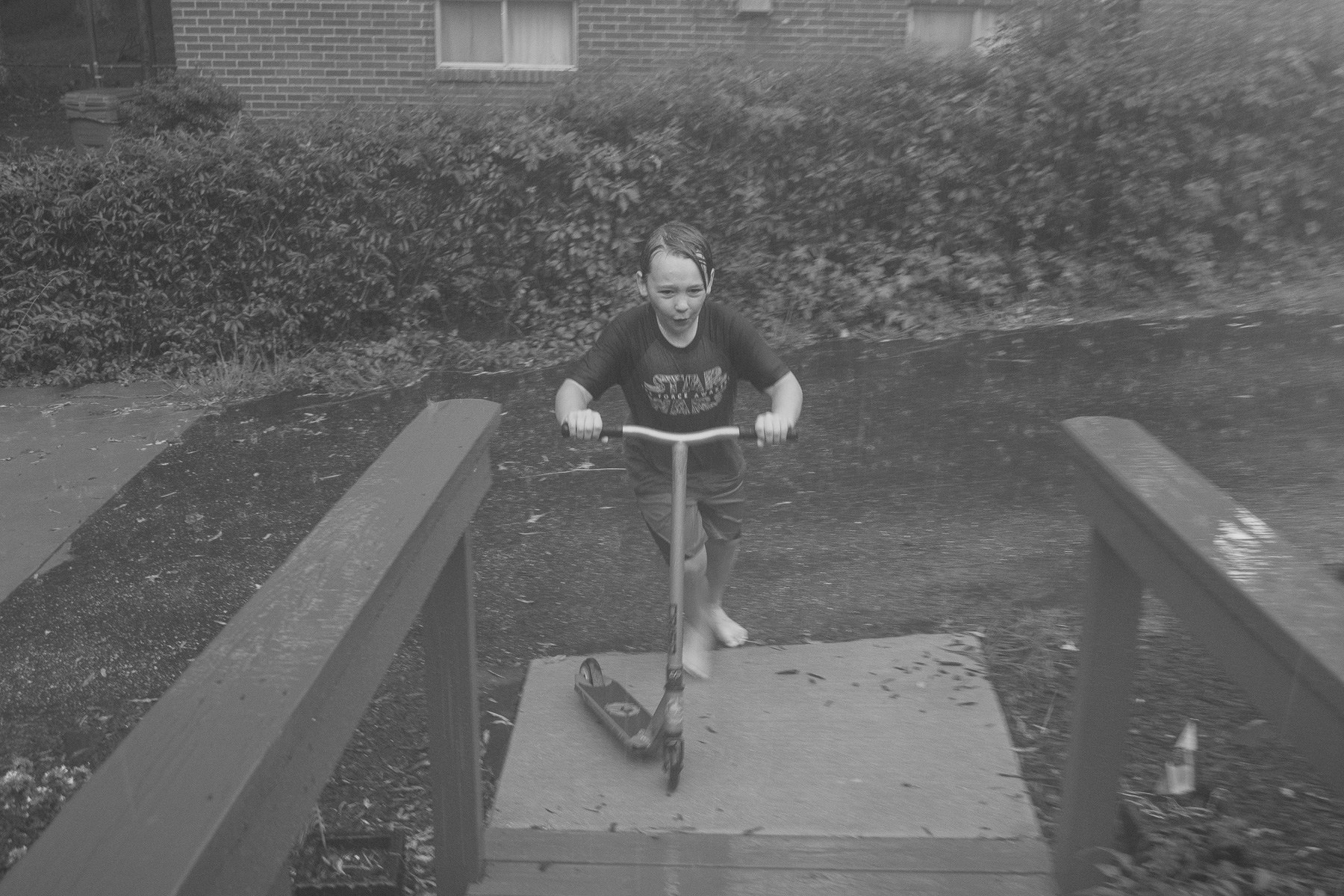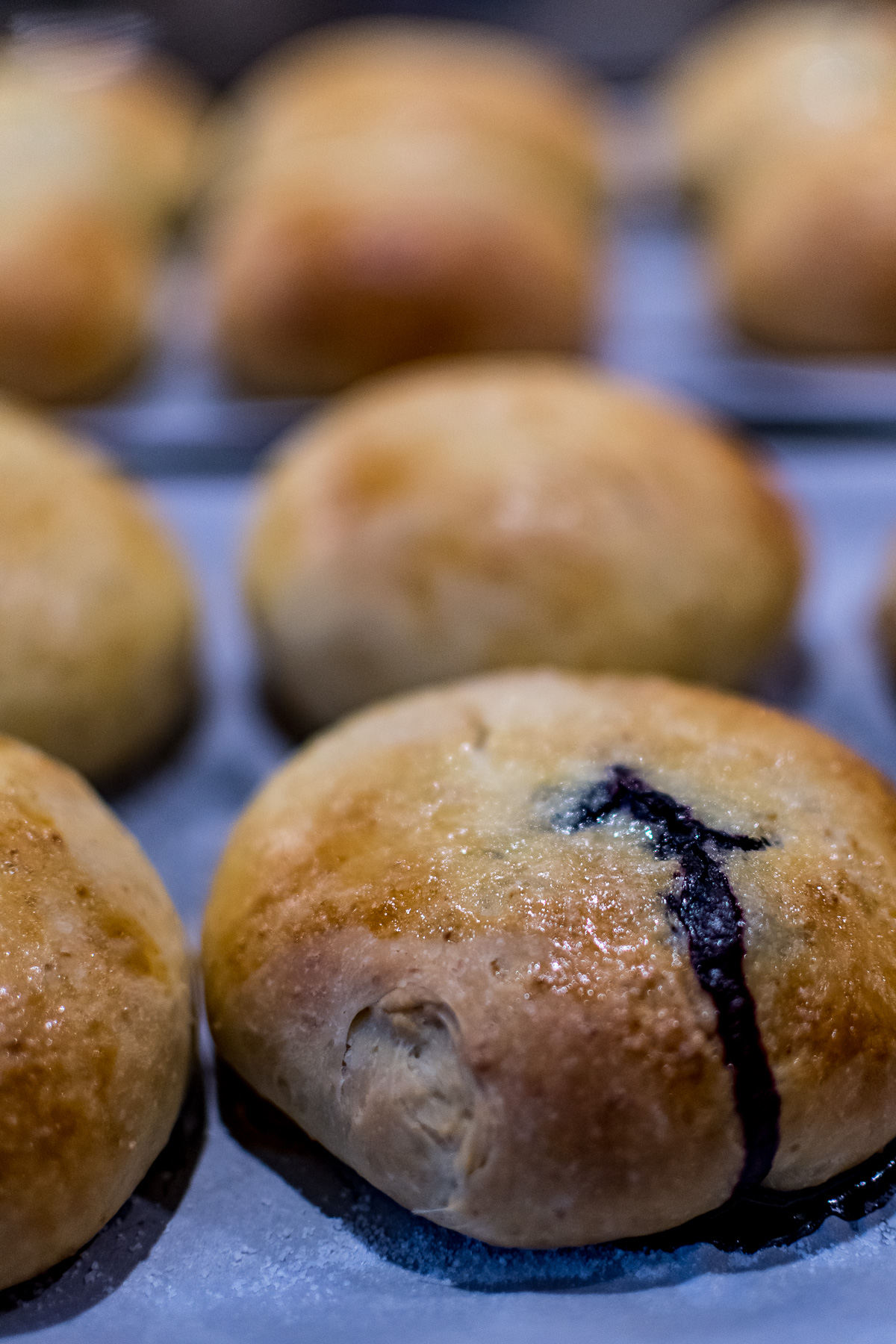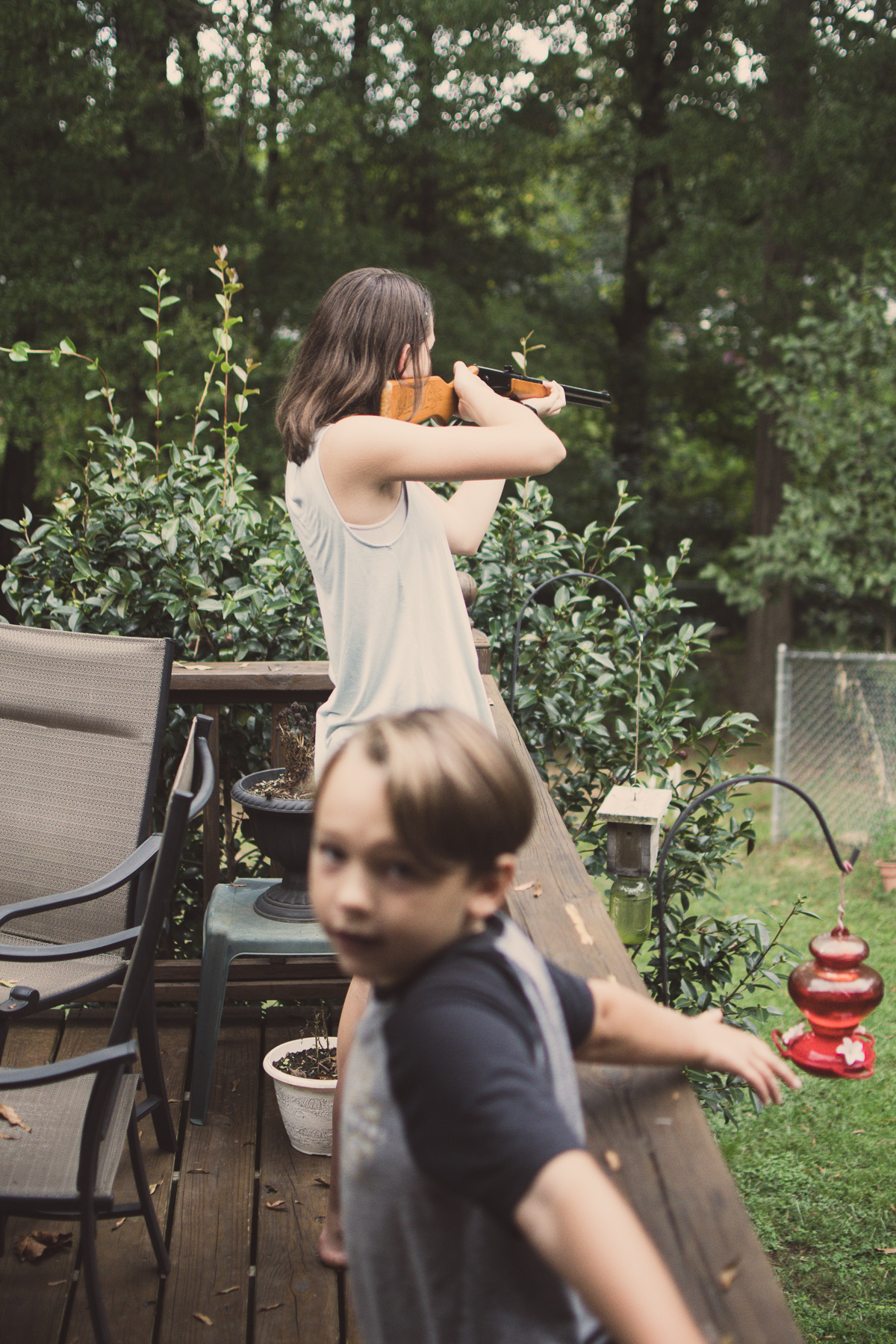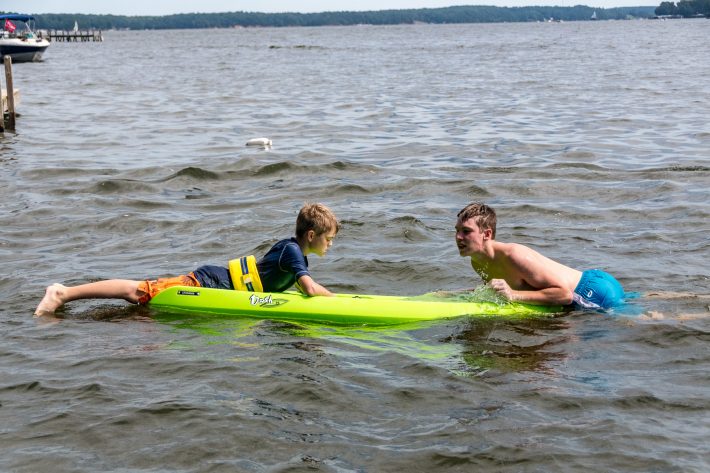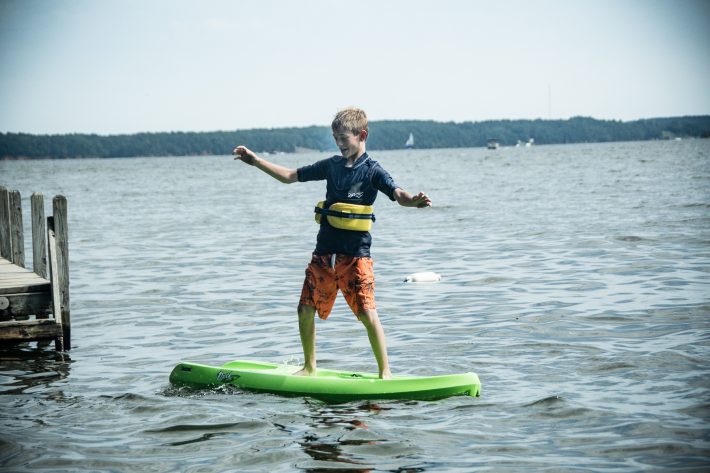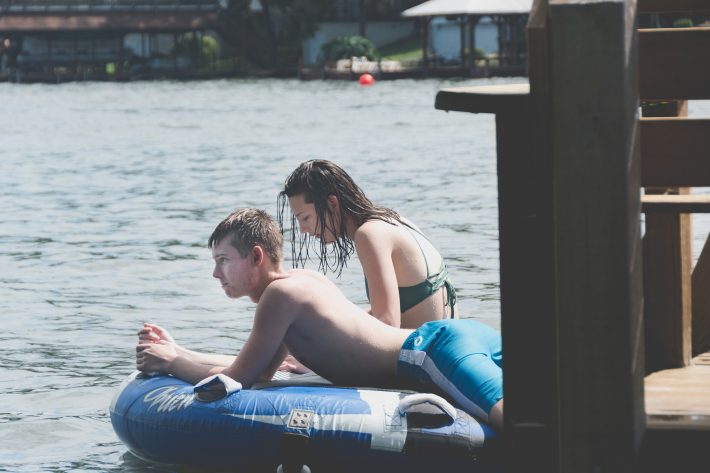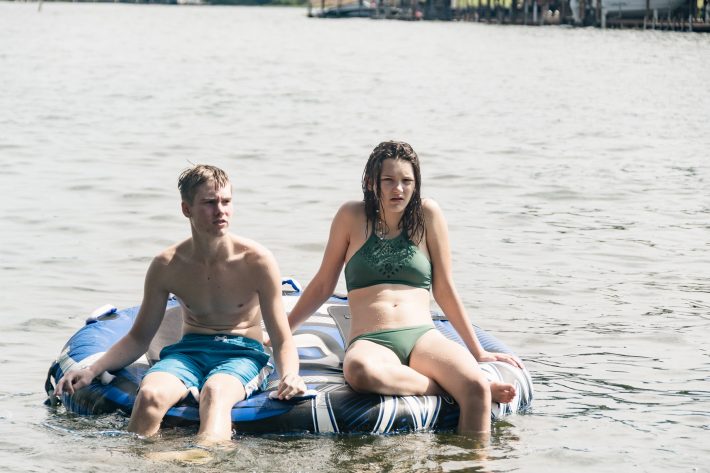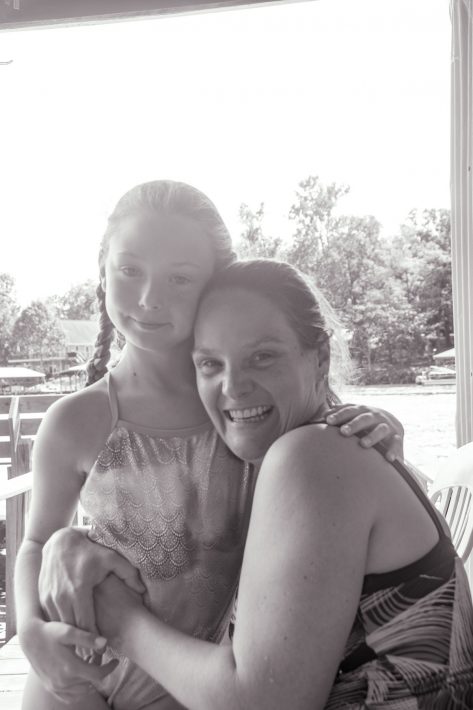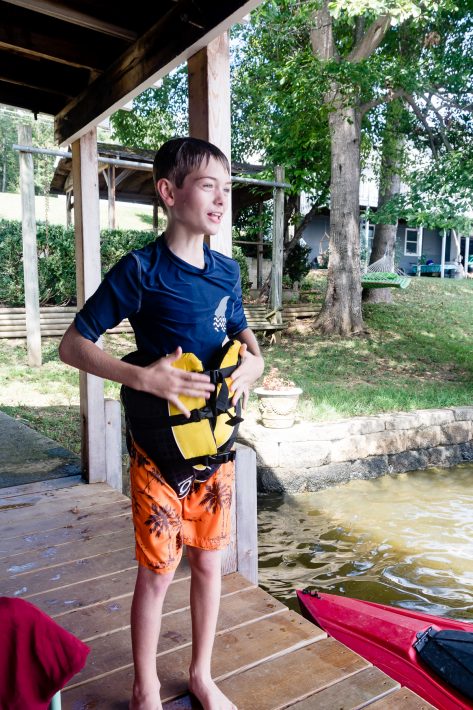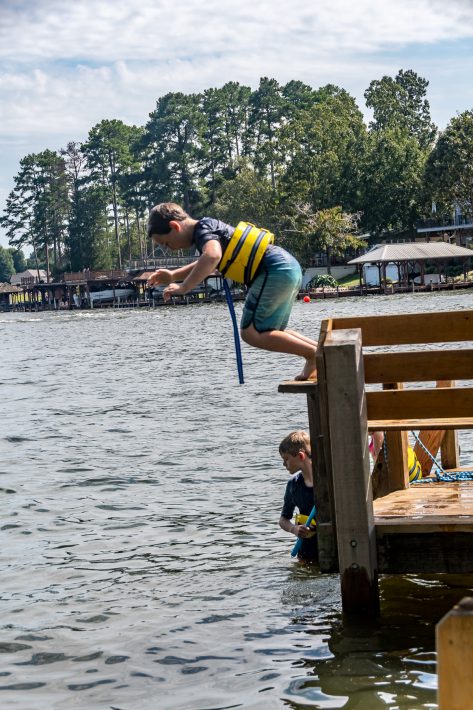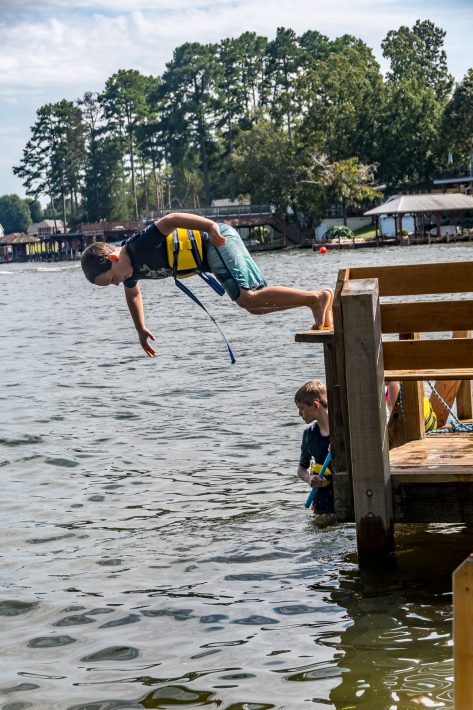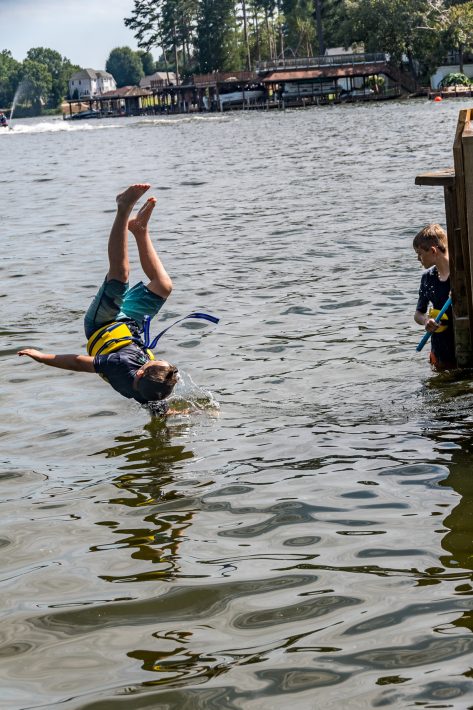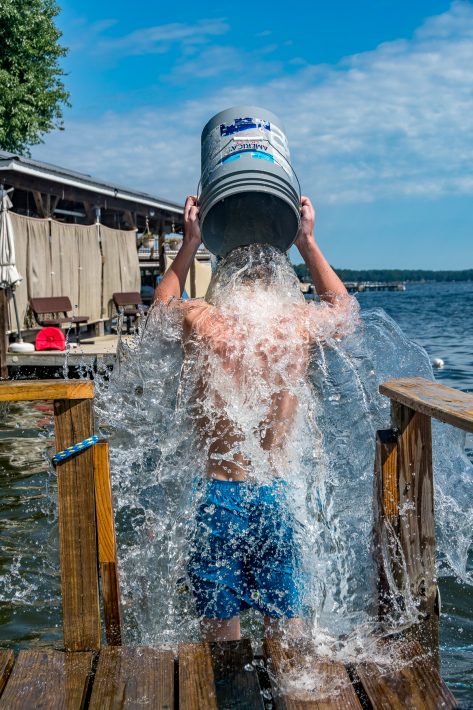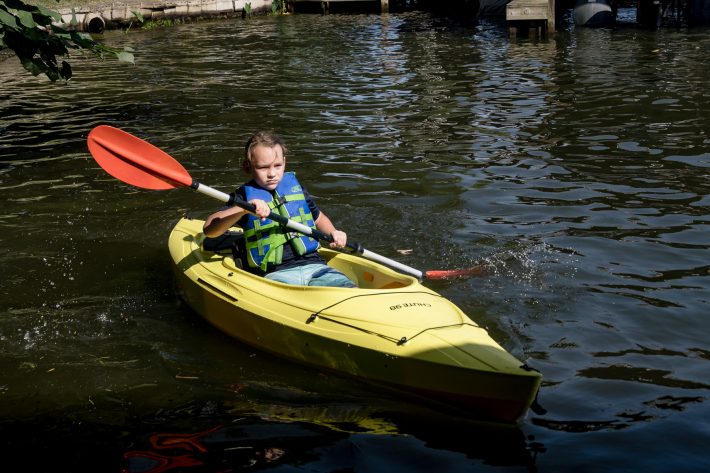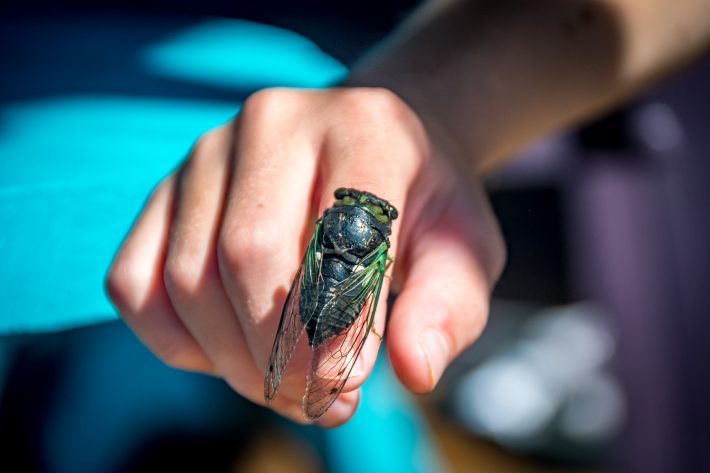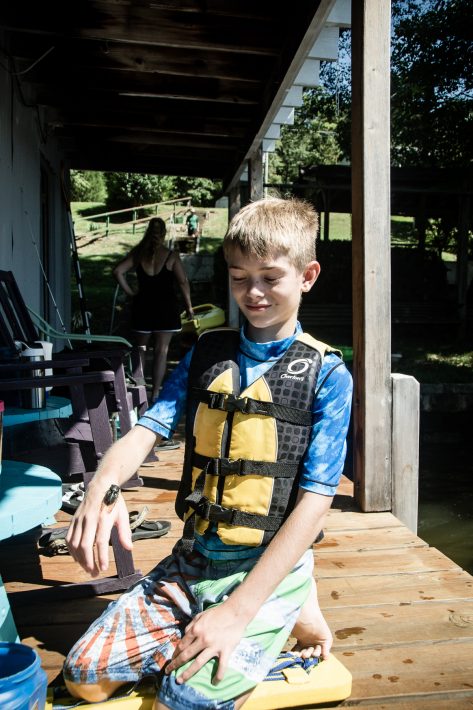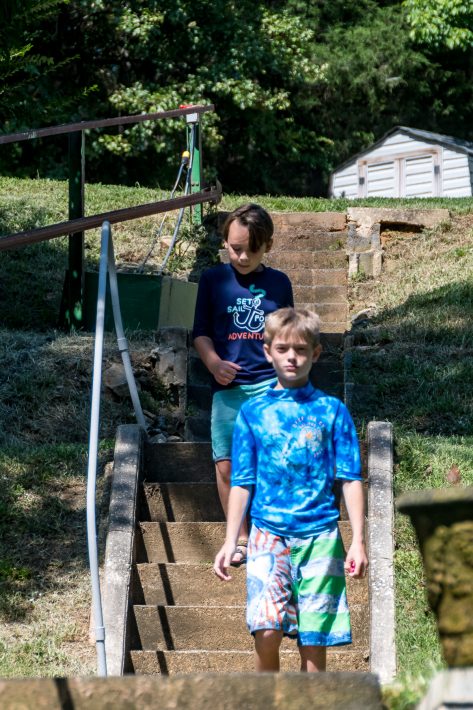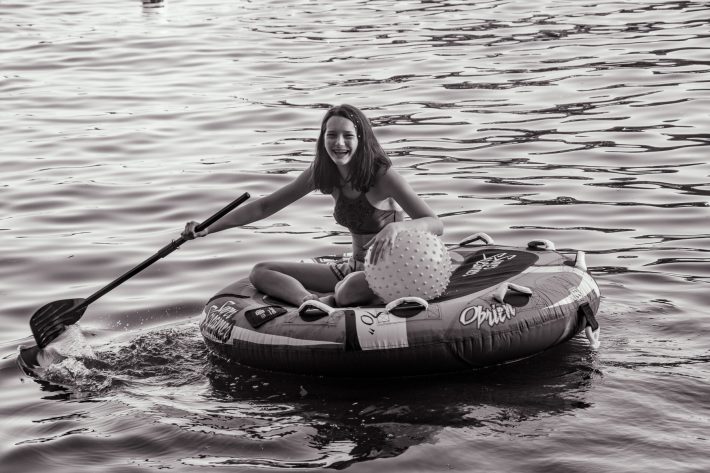Sunday Theological Thoughts and a Ride
A Ride
We went for a bike ride this afternoon to our favorite local park. We got an up-close view of a local:
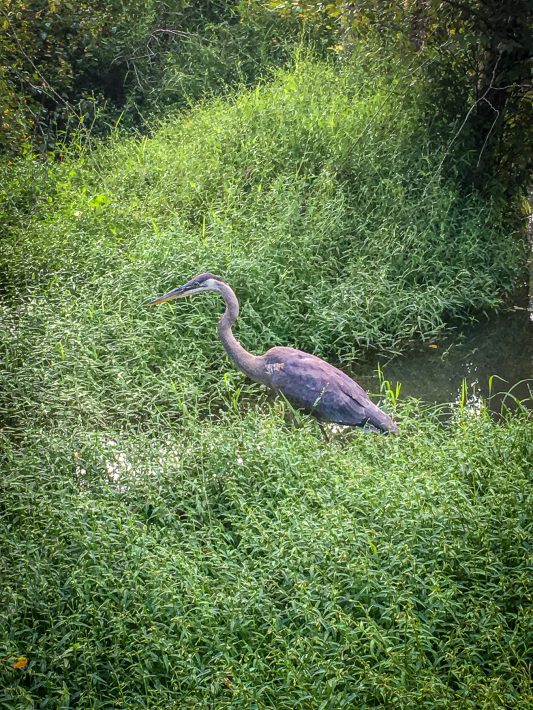
We see them at a distance quite frequently, and they even come into our creek behind our house from time to time, but this is undoubtedly the closest we’ve ever been to one.
Sunday Theological Thoughts
While in Mass today I noticed an oddity that I’d heard many times but never really thought about: just before the congregation recites the Lord’s Prayer, the priest says, “At the Savior’s command and formed by divine teaching, we dare to say…”
“Why ‘dare’?” I thought. “Doesn’t Christianity present God as a father?”
A little research revealed this:
The priest notes what a privilege it is for us to be able to talk to God in this way: “At the Savior’s command and formed by divine teaching, we dare to say …” What is it that we dare to say? “Our Father”. This is precisely what Jesus calls us to do. It underscores the intimate relationship we now have with God because of Jesus’ work of salvation. We share his life because he came to share ours. Through our union in Christ, God has truly become our Father.
Website for Church of St. Vincent DePaul in Singapore
I suppose the argument might be that pre-Jesus, no one would have thought to call God Father. I don’t really know. But there’s always been something of a thread of fear in most theisms, which seems somewhat unhealthy to say the least.
It’s certainly present in the Bible, including this curiosity: “The fear of the Lord leads to life, and whoever has it rests satisfied; he will not be visited by harm” (Proverbs 19:23).
It seems somehow to echo what’s said later in Mass, just before going to take communion: “Lord, I am not worthy that you should enter under my roof, but only say the word and my soul shall be healed.” If God is indeed to be seen as a father-figure, who ever talks to their father that way? If my children said they’re not worthy of being in my presence, I would wonder how I’d managed to raise them with such little self-esteem. I don’t even know that you could raise children to think that way without emotionally abusing them. I understand the sense of humility, but this just seems to be a little much. I know, I know — I’m viewing it through a human perspective. That’s all any of us have, though, and it seems, honestly, a little like a cop-out. “Who are we to question the ways of God?” covers a multitude of unanswered prayers.
Morning Reading
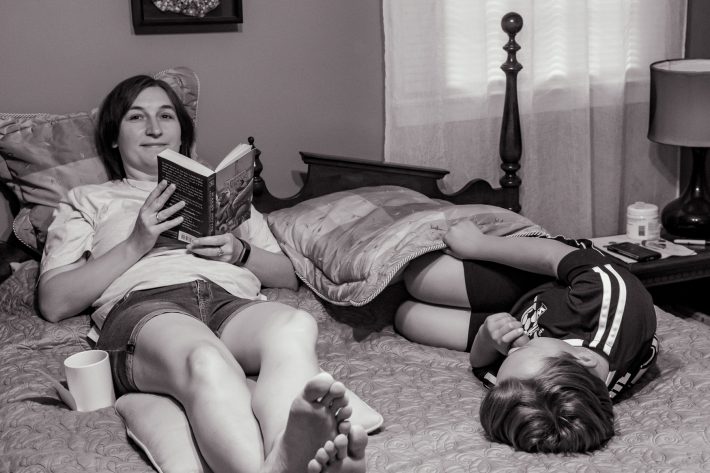
“The Names”
A poem by Billy Collins for the first anniversary of the 9/11 attacks
Yesterday, I lay awake in the palm of the night.
A soft rain stole in, unhelped by any breeze,
And when I saw the silver glaze on the windows,
I started with A, with Ackerman, as it happened,
Then Baxter and Calabro,
Davis and Eberling, names falling into place
As droplets fell through the dark.
Names printed on the ceiling of the night.
Names slipping around a watery bend.
Twenty-six willows on the banks of a stream.
In the morning, I walked out barefoot
Among thousands of flowers
Heavy with dew like the eyes of tears,
And each had a name —
Fiori inscribed on a yellow petal
Then Gonzalez and Han, Ishikawa and Jenkins.
Names written in the air
And stitched into the cloth of the day.
A name under a photograph taped to a mailbox.
Monogram on a torn shirt,
I see you spelled out on storefront windows
And on the bright unfurled awnings of this city.
I say the syllables as I turn a corner —
Kelly and Lee,
Medina, Nardella, and O’Connor.
When I peer into the woods,
I see a thick tangle where letters are hidden
As in a puzzle concocted for children.
Parker and Quigley in the twigs of an ash,
Rizzo, Schubert, Torres, and Upton,
Secrets in the boughs of an ancient maple.
Names written in the pale sky.
Names rising in the updraft amid buildings.
Names silent in stone
Or cried out behind a door.
Names blown over the earth and out to sea.
In the evening — weakening light, the last swallows.
A boy on a lake lifts his oars.
A woman by a window puts a match to a candle,
And the names are outlined on the rose clouds —
Vanacore and Wallace,
(let X stand, if it can, for the ones unfound)
Then Young and Ziminsky, the final jolt of Z.
Names etched on the head of a pin.
One name spanning a bridge, another undergoing a tunnel.
A blue name needled into the skin.
Names of citizens, workers, mothers and fathers,
The bright-eyed daughter, the quick son.
Alphabet of names in a green field.
Names in the small tracks of birds.
Names lifted from a hat
Or balanced on the tip of the tongue.
Names wheeled into the dim warehouse of memory.
So many names, there is barely room on the walls of the heart.
Volleyball Thursday
Today in Class
Students have been spending the last two days working on how we can use plot and setting to analyze a short story. Each day’s classes came up with slightly different results.
Our first step was to explicate the plot and setting of our story:

We determined that the real heart of the story, and thus of the conflict, was the fact that the protagonist unknowingly kills his brother as he tries to escape from being pinned down on the roof. This is what gives the story its power; this is the heart of the story that cannot be tampered with.
We then began asking whether we could change various elements of the plot. We determined that it doesn’t have to be on a roof; it just has to be somewhere the protagonist can be trapped. We decided that it doesn’t have to be Dublin, though a historian of the Irish Civil War might tell us that snipers were only active in Dublin. (I have no idea if this is the case. I used it as an example.) At first, everyone thought it couldn’t be moved from Ireland because it’s set in the Irish Civil War, but we soon figured out that it simply has to be in a setting where a brother could kill a brother without knowing it. Civil war and gang warfare are the most logical locations.
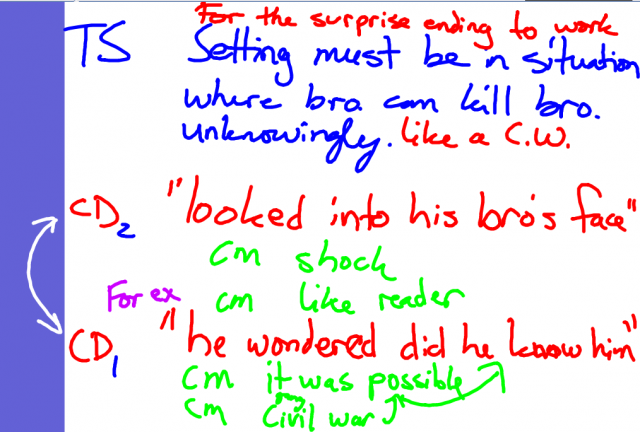
From there, it was fairly easy to create a working TS for our paragraph. We added some CDs before we decided that we had them in the wrong order: CD2 was our first CD so we would actually reverse the order if we were to write this paragraph. Finally, once all the CM was completed, we saw that our TS was a little out of alignment with our chunks, so we gave it a whack to knock it over a bit, adding “In order for the surprise ending to work” at the beginning of the paragraph.
At this point, the majority of the work is done. We still have actually to write out everything, but the hardest part is behind us.
Volleyball Wednesday
The Girl’s team had another game today — their fourth or so. It was against St. Joseph’s, a local Catholic school that houses grades K-12. Their girls looked awfully small. And then we learned that they’re just sixth- and seventh-grade players. The eighth-grade players move up and play on the high school team.
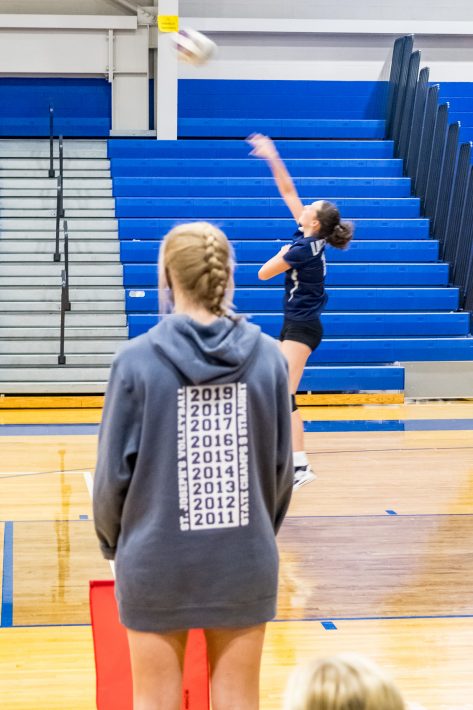

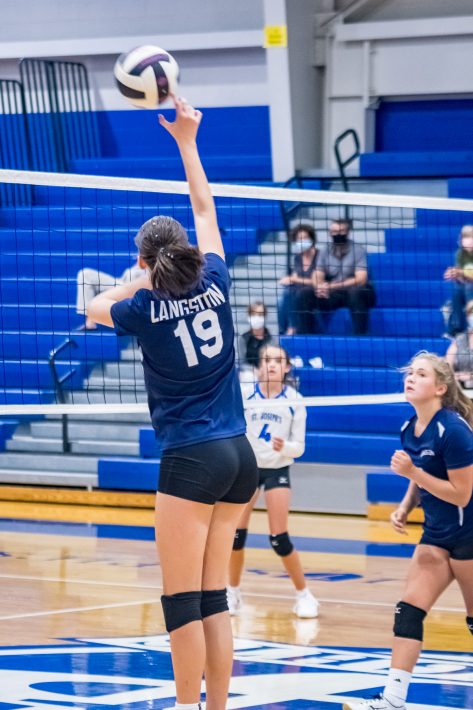
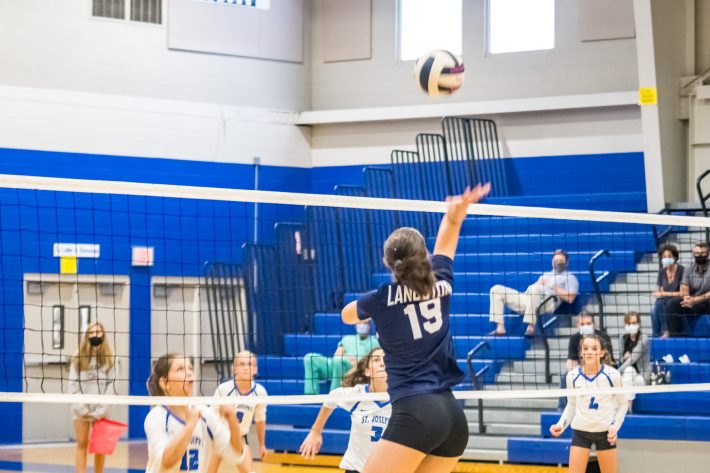
That put things in a whole new perspective, to be sure.
Still, it’s not about winning and losing they say — and I happen to believe as well. The Girl did the best she could, shook off mistakes and kept going, and was a constant encouragement to her team members.
Covid-Era Lesson
Today we began the heavy lifting of the first unit of significance: we’re learning the difference between analyzing and summarizing in order to begin analyzing short stories. We looked at Li-young Lee’s “The GIft” in order to determine the difference. The first step was to determine how much of the summary was not from the poem, highlighting those portions in the summary yellow. By the middle of class, it was clear to students that none of the summary should be highlighted yellow as all of the material in the summary comes directly or indirectly from the text.

Next students looked at analysis of the poem:
The poem “The Gift” tells the story of a young boy whose father is removing a splinter from his hand. It is a poem about the fact that everyday events like pulling a splinter out can be in fact gifts, and the poem accomplishes this by highlighting apparent opposites. To begin with, the act of pulling a splinter out of the hand is inherently violent, but the poem creates a tenderness about it. The speaker tells us that instead of focusing on the painful act of pulling the splinter out, he “watched his [father’s] lovely face” and listened as his father “recited a story in a low voice.” His father’s face and voice were calming, and this undoubtedly helped turn the situation into a calm memory later in life. In fact, instead of being a violent act, this is only a tender moment.
Students, working in groups, were to highlight light blue anything that’s an inference and dark red anything that comes directly from the text.

The upshot was the understanding that most if not all of the content for summary comes from the text itself whereas most of the content in analysis comes from the writer’s head — opinion and inference backed from the text.
The final step was to analyze the paragraph for Schaffer completeness. Students determined the following:
- This sentence feels like a topic sentence (it makes a claim) but is in the wrong location:
It is a poem about the fact that everyday events like pulling a splinter out can be in fact gifts, and the poem accomplishes this by highlighting apparent opposites. - The third sentence feels like it might be a CD because it’s got a transition element but it’s an opinion, which is not the role of CDs but rather CMs or even TSs.
To begin with, the act of pulling a splinter out of the hand is inherently violent, but the poem creates a tenderness about it. - The fourth sentence has a quote, which means it comes from the writer’s source (in this case, the poem) and not his/her head. This means it feels like a CD but is in the position of a CM otherwise.
The speaker tells us that instead of focusing on the painful act of pulling the splinter out, he “watched his [father’s] lovely face” and listened as his father “recited a story in a low voice.”
Lake Tillery 2020
From the Past
It doesn’t seem so long ago — we always say that, and we always will.

The Girl, Gone
Another one from Papa’s folder.

As for what happened today — nothing much. Planning, mowing. Nothing major. However, K and the kids are gone, off for a weekend with friends at the lake. Papa and I are here alone. The house is so quiet. And lonely.
Schooling 2020
Were this a normal week, I would have finished today feeling that I had laid the foundation my students for the rest of the year by teaching them the basics of the writing system we use. They would have practiced and planned with partners as I wandered about the room, listening to conversations here and there and intervening when I felt it was necessary.
“Please zoom in to 150% on Google Docs,” I would have said, “so I can get a peek as I walk by and see if you need direction or not.” I would have looked over students shoulders to see if their first attempts with this at-first bizarre system of writing I teach (and insist on students using) were developing according to plan.
I would have told a few students, “Look, you really need some one-on-one time with this, so come by tomorrow during advisory, and we’ll make sure you leave feeling much more confident.”
Instead, I went step by step with students through the process, but each student was with me for a different part of the process; the other time they worked through it on their own at home with materials I developed. Which means I was unable to assess and assist them as they went along. Which meant I spent an inordinate amount of time assessing things online this week that I never would have assessed in a normal year. Which means I’m not at all confident about my students’ development right now.
Covid-schooling.
Discovered Treasures
I was going through Lightroom folders when I found one called “100CANON_fromPapasCamera” from 2013. It was, as the name suggests, from Papa’s camera.
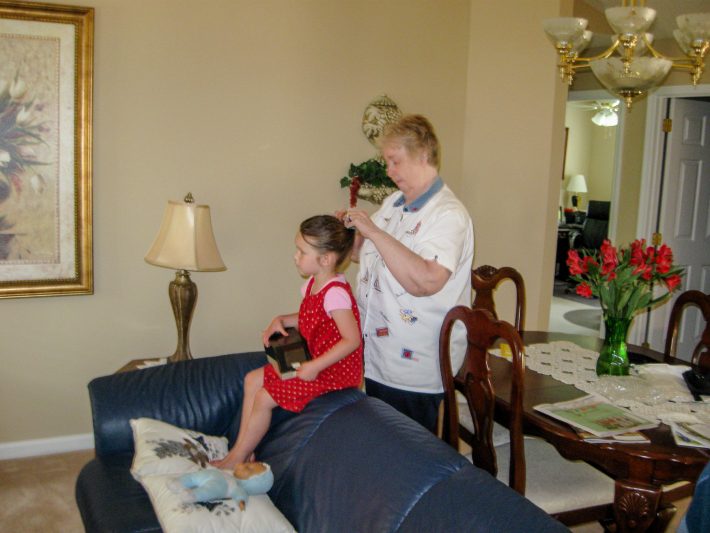
Lots of pictures I don’t remember seeing.
The Doll
I don’t remember where the doll came from — some aunt or other gave it to us, or maybe Nana. It’s fairly lifelike in its size and features. Enough that when we first put the doll’s box in E’s closet (far back on the top shelf), he fussed quite about about how terrifying it was to think that such a thing was lurking inside his closet.
Today, K got the doll out to practice for a shoot she did for a friend who just had her first child.
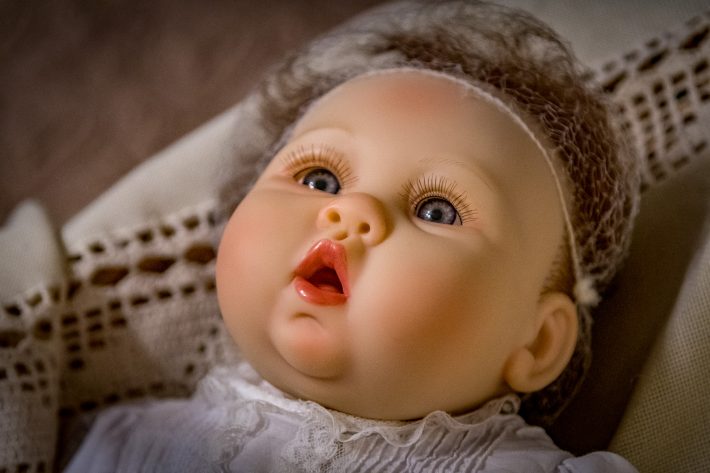
As the Boy was cleaning up his room before bed, I noticed the box on his bed and went downstairs to retrieve the doll. I tried to sneak back in without him noticing because I feared a little breakdown when he realized the doll was going back into the closet.
“Oh, are you putting the doll up?” I heard behind me.
“Yeah. Mama was using it to practice pictures with today.”
“Oh.” Pause. “That doll — I used to be so scared of it.”
Spicy
The Boy has a love/hate relationship with spicy things — well, things he calls spicy. Coke is a little spicy, he says, and I guess there is something of a tingle in the flavor, a small little bite from the carbonation. Of course, we drink it so very rarely that that alone might account for it: he’s not used to carbonated drinks.
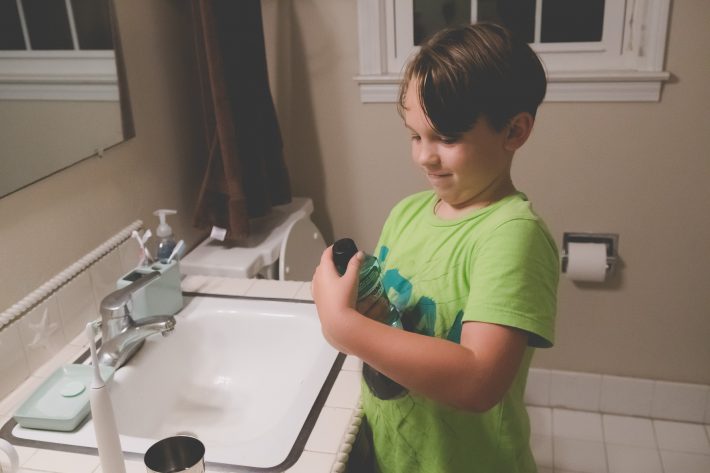
Yet he loves chips and salsa, and he prefers the medium salsa to the mild. And Aldi’s spicy salami? He’ll devour that.
Today, while out shopping with K, he was insistent on getting some Listerine to try, because he knew it was “spicy.”
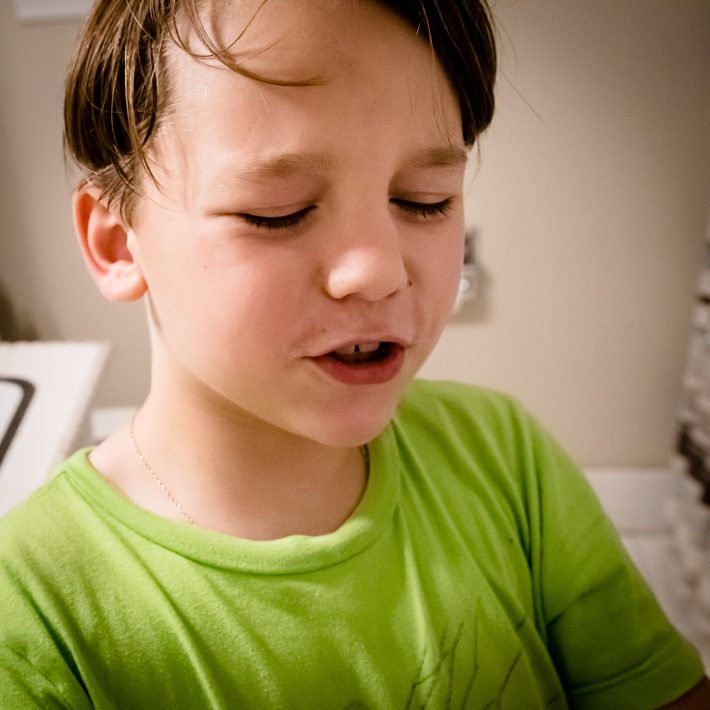
His verdict tonight? Not too bad. His expression, though, belies his calm proclamation.

